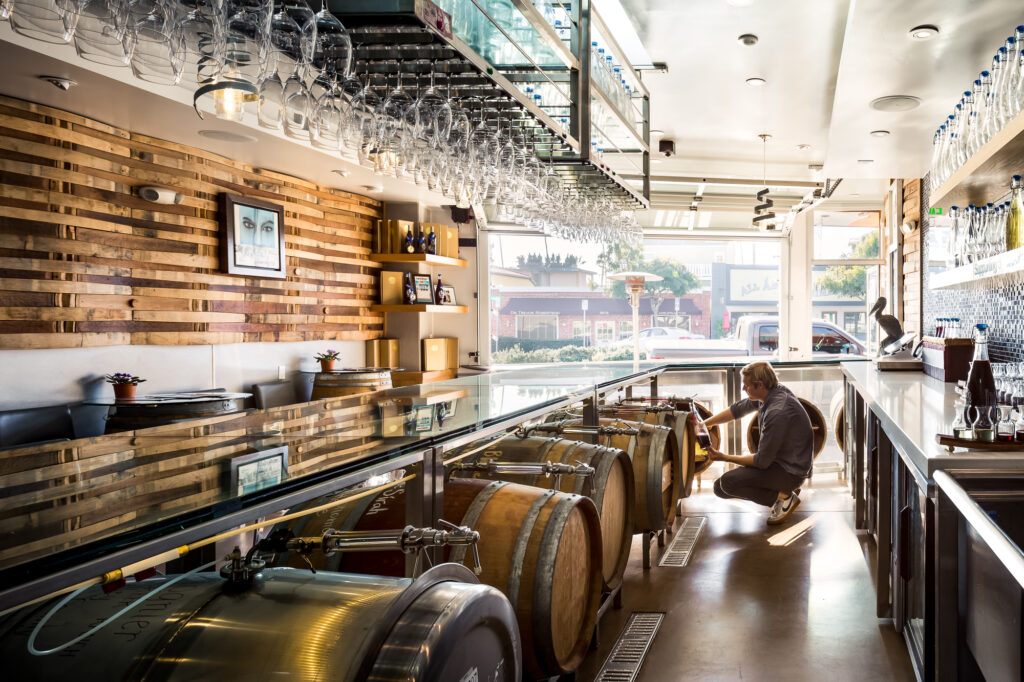If you’re looking for a great bottle of wine, you won’t find it at LJ Crafted Wines in La Jolla, California.
But that’s only because at LJ Crafted Wines, they don’t sell wine in bottles. The wines are transported in their original barrels to the tasting room and served to customers directly from those barrels.
LJ Crafted Wines makes its wine in a custom crush facility in Napa. When it’s ready, the full barrels are shipped to their urban winery in La Jolla, where they are served by the glass, straight from the barrel, or can be taken home in a growler.
It’s a unique business model, but it’s one that saves money and helps the environment, said owner Lowell Jooste, who moved to the San Diego area from South Africa, after selling Klein Constantia, his family’s winery.
“I think that the heavy and costly traditional single-use packaging is the biggest environmental challenge to our industry. Our selling points are high quality from Napa Valley and selling wine not packaging,” said Jooste, who co-owns the winery with his wife, Anne.
The transfer from barrel to glass is made possible via Lowell’s patented apparatus. Trademarked as a Wine Steward®, it allows wine to be repeatedly served directly from the barrel in which it is aging, without the remaining wine losing integrity.
“Using our patented equipment that displaces the wine into a 60-gallon barrel with N/CO2, we serve the wine directly out of the barrel by the glass or into growlers with swing tops,” Jooste said. “As I guess you can imagine, the concept leapfrogs the traditional costs of bottling, packaging and middlemen.”
Jooste estimates that in the five years since opening the winery, the 330 barrels they have been through translates roughly to having avoided using 99,000 single-use bottles.
“I appreciate that it’s a drop in the ocean, but it’s a start and a very repeatable concept,” Jooste said.
The unique packaging idea was one Jooste drew from the beer world.
“In addition, I have often felt that wine tastes better from the barrel than after the bottling line,” Jooste added.
Jooste said there were important factors for wineries exploring the idea of growler packaging and straight-from-the-barrel tastings to consider. The winery’s urban setting contributes to the effectiveness of its business model.
“Most importantly, make sure it’s located in the right demographic and in a place where it’s convenient for customers to bring in growlers,” Jooste said.
Photos courtesy of LJ Crafted Wines










Be the first to comment